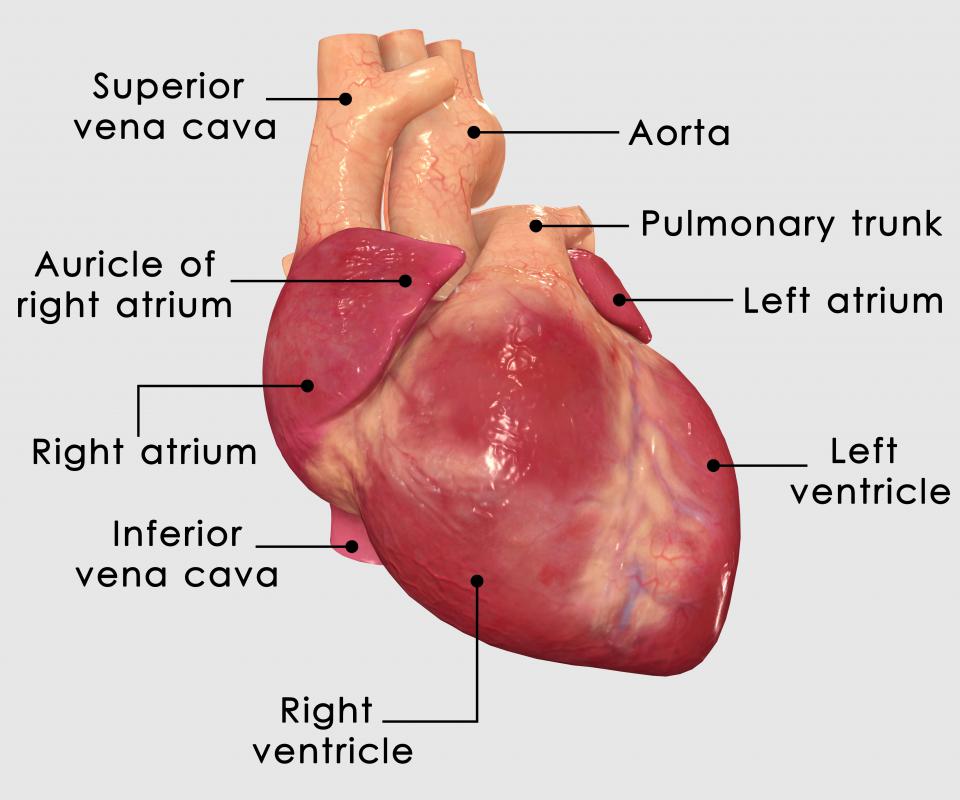At TheHealthBoard, we're committed to delivering accurate, trustworthy information. Our expert-authored content is rigorously fact-checked and sourced from credible authorities. Discover how we uphold the highest standards in providing you with reliable knowledge.
What is the Relationship Between Pulmonary and Systemic Circulation?
Pulmonary and systemic circulation are two separate cardiovascular systems for distributing oxygen-rich blood from the heart and lungs throughout the body. The blood that is returned to the heart from the body via the veins has been depleted of oxygen, or deoxygenated, and must receive oxygen again in the lungs before being re-circulated back to the body. Pulmonary circulation is the process by which the deoxygenated blood is pumped from the heart to the lungs, receives oxygen there, and is pumped back into the heart. Systemic circulation is the process by which this oxygenated blood is pumped from the heart and distributed via the arteries throughout the body, delivering oxygen and other vital nutrients to the organs, muscles, and other tissues that require it. It is then returned to the heart by the veins, where the process of pulmonary and systemic circulation begins again.
The path taken by the blood during pulmonary circulation is known as the pulmonary circuit. It begins in the right atrium, the top right chamber of the heart, where oxygen-depleted blood is deposited by the superior vena cava, the large vein entering the top of the heart. From here it is pumped into the right ventricle, the chamber below, by way of the tricuspid valve, and subsequently out of the heart through the semilunar valve. It then enters the pulmonary artery, a large blood vessel that transports the blood up and out to either lung. This is the only artery in the body that during pulmonary and systemic circulation transports deoxygenated blood, a job normally performed by veins, and toward, not away from, the heart.

When it reaches the lungs, the blood undergoes a process known as respiration, by which the lungs pull carbon dioxide from the blood and replace it with oxygen from the air that has been inhaled. This newly oxygenated blood is then carried back to the heart by vessels known as the pulmonary veins, which enter the left side of the heart via the left atrium. The pulmonary circuit of the system of pulmonary and systemic circulation is then ended.

To begin the systemic circuit, oxygen-rich blood from the left atrium is pumped below to the left ventricle, where it exits the heart by way of the aorta. After passing through the semilunar valve and entering the aorta, the largest blood vessel of the body, it is transported up the ascending aorta toward the aortic arch, where it follows branching blood vessels that supply the head, neck, and arms. Much of this blood is diverted downward by the descending aorta, where it supplies all body structures from the chest down. Once this blood has delivered its oxygen to the tissues that need it, it returns via veins to the heart, where it is deposited by the vena cava into the right atrium. Thus the cycle of pulmonary and systemic circulation begins again.
AS FEATURED ON:
AS FEATURED ON:

















Discuss this Article
Post your comments